#to my understanding it's an adaptation of a light novel that ORIGINALLY took place pre canon and therefore without atsushi
Explore tagged Tumblr posts
Note
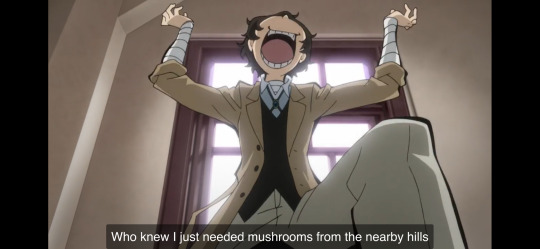
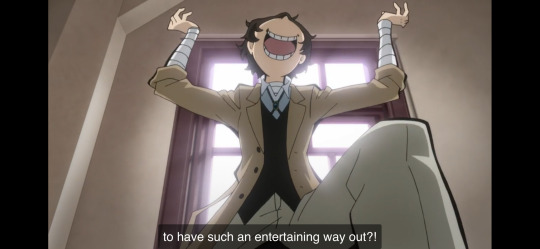


SOMEBODY GET ME OUT OF HERE
LMFAO I JUST REMEMBERED WHAT EPISODE YOU'RE ON THIS IS SUCH A FUN ONE
#to my understanding it's an adaptation of a light novel that ORIGINALLY took place pre canon and therefore without atsushi#it's SUPPOSED to be dazai's entrance exam#so here dazai being on shrooms seems like entirely average dazai behavior#but originally this would've been like. his first day on the job. with kunikida. good lord#also fun fact I hear he pretends to just. not know how to shoot a gun. like at all. complete ditz about it#FROM THE EX MAFIA MEMBER LMFAO#ask#tallytals#hi tals!
10 notes
·
View notes
Text
And now we’re here...
1. SSSS.Gridman

I said from the beginning I wasn’t huge into this one but wanted to see where it went. And, I did, but it didn’t change much. All the character intrigue I had in the beginning pancaked well before the end. I really lost interest once the “big reveal” came out of the bag and it was an underwhelming, already-overused abstraction. I know nothing about the Ultra series, so I have to imagine others took a shine to this more than I did, but to me it was just a contrived adaptation of other stories already told without enough originality thrown in to distract me from that. I got flamesprayed following Ep1 for saying it looked like Pacific Rim (giant robot that is called upon to defend a city against kaiju that come out of a rift in the sky... where the hell would I have gotten that impression, eh?), but in the end, it was actually more Dark City than anything. If this helped a franchise continue on, then I am happy for the fans that have been wanting more, because I know how that goes. To me, though? Gridman was pretty lame. I struggled to finish it.
2. Double Decker! Doug & Kirill

I said it would get old. It got old. Was funny for a while, but I just... eh.
3. Index III (Toaru Majutsu no Index III)

Still ongoing, still good. Was a departure from the fun and innocent that the series had been in the first two installments, and it really threw me for a loop for a few weeks how everybody is dying and not in an endearing kind of way, but moreso the macabre kind of blood and dismemberment. There’s not nearly as much face time with those established characters as what I thought there’d be, either. Some of the scenes have so much dialogue that it feels like an attempt to stall the pace that ends up being just awkward. And, the animation is just enough different compared to Index I/II and Railgun that it becomes a distraction every now and then (Misaka especially!). All that considered, though, the story is still outstanding and compelling, it has intelligent writing and introduces new characters that spark interest, and I am still enjoying this new version of the world of Index. It’s just very different from the version we’ve known so far (though it is following the source material, so it’s not like it’s anything too insane).
4. Goblin Slayer

I was looking for a reason to hate this one from about halfway through the first episode. I was automatically expecting a depraved ecchi excuse to show goblins fucking young girls like what we were given at that point - which was only maybe five minutes in from start - and I kept watching each week waiting for the other shoe to drop. Instead, what we got was a ride I thoroughly enjoyed. Am not saying there weren’t flaws and a healthy dose of tropes and clichés, but I found it imaginative, there was character development I was not expecting, and I really liked seeing everyone come around. I would watch another season if it started today for sure, but I have to wonder if a second season would ever be in the mix. It just feels too much like a one-off. Still, though, worth watching, and would again. Probably will, someday, too.
5. That Time I Got Reincarnated as a Slime (Tensei shitara Slime Datta Ken)

I have to admit, I thought this one was a little childish and cute at the beginning, but MAN, does it deserve some healthy praise from me now. In many ways it is light-hearted and chipper and superfluous, but at the same time, I fell in love with the invention and creativity of this story. The characters are great, and the world creation is beyond fantastic. I especially like how even the harem aspect that could have easily been exploited falls seamlessly into place (looking at you, here, Shion), and doesn’t feel anything like what it really is. Things often feel ridiculously predictable, but I’ve been surprised more than once so far. Datta has been the gem of the season for me, and I wait for the next episode every week. It is a total blast, so fun.
6. Sword Art Online: Alicization

If this latest installment of the SAO story has shown me anything, it’s that I can’t stand this show anymore. The animation has become pedestrian at best, the story seems all over the place, and what story there is in place screams The Matrix, which annoys me more than anything given that I have been dying to see something new out of this series for some time. I’m fed up with the unnecessarily explicit groping/female attack scenes (or, full-on, blurred out extended rape, like we’ve apparently graduated to), the whiny characters that used to be better, the gaping plot holes with zero attempt whatsoever to shore anything up, and most of all with the automagical “it all turns out OK” every time adversity comes a’ knocking. Have said it plenty and will repeat it again, I have not read the light novels and expect some things to be lost in translation, but I can’t get excited to watch any more of this shitshow. As much as I started out loving this concept and these characters five years ago, I think I am altogether done now because of how atrocious Alicization is. I just can’t anymore. I honestly doubt I’ll even finish it.
7. Rascal Does Not Dream of Bunny Senpai (Seishun Buta Yarou wa Bunny Girl Senpai no Yume wo Minai)

I wanted this to be better, I wanted the characters to be deeper, I wanted there to be less cutesy humor and more introspective into the trials and hardships that teenagers face that lead to the manifestation of “puberty syndrome”, because I think we all had those times. Anyone who has ever been a teenager has imagined some pretty uncomfortable things about themselves, but what if those thoughts ever came to fruition? I just wanted this show to get into the dermis every once in a while. I wanted a lot of other things that never happened in 2018, too, though lol Rascal of course, did not do any of those things, and ended up being yet another formulaic romcom made for the masses. It actually reminded me a lot of Kotoura-san in that it felt like the meat and potatoes of the show was over in a few short episodes and the rest was just mindless filler to take up space to carry it through the end of the season. The show I was looking forward to the most ended up being the biggest letdown. It had its moments, and I did watch the whole thing, sure, but I can’t say that Rascal was anything more than just that - one that I watched.
8. Run With the Wind (Kaze ga Tsuyoku Fuiteiru)

Enter the dark horse of the season. If I hadn’t been a runner for years before I developed bad knees, I don’t know that I’d have watched this. If I hadn’t started watching another anime about kids running track and field that pretty much changed my worldview on anime genres as a whole a few years back (Suzuka), I don’t know that I’d have watched this. What I do know is that this is a freaking great show imo. I don’t think it’s all that common to have more than a small handful of characters undergo such development over the course of a show, but Run With the Wind provides fantastic storylines and evolution for almost all of them. I also really like that it’s a collegiate setting instead of pre-to teenagers, because it makes these transformations and maturations that much more believable to me - college is a time where those emotions that made us insane teens finally start to take shape and we start seeing the bigger picture of things. We start to understand the weight of our responsibilities and actions more. And we begin to see the kind of person we want to become. I absolutely believe that these kids can change within the construct of their situations more than a 14 year old could. And, anyone who has ever been a part of a team sport that relies on individuals with widespread levels of talent to come together, I think Run With the Wind really delivers a relatable story. Am not calling it the next great thing - far from it and a few years from now I doubt most will have even heard of it. But I do like how grounded and believable this show is. I can see all of it happening in real life, and I easily could have been teammates with just about any of them.
#ssss.gridman#double decker doug & kirill#index iii#goblin slayer#that time i got reincarnated as a slime#sword art online alicization#rascal does not dream of bunny girl senpai#run with the wind#fall anime 2018#anime
39 notes
·
View notes
Text
A Look Back on TREASURE PLANET
So recently I rewatched TREASURE PLANET for the first time in about fifteen years and… I'm not gonna lie, it's still my personal favorite of the 2D Disney animated features from the early to mid-2000s.
Let's be real. Of the 2D features Disney released around that time period, TREASURE PLANET is one of the more solid films. ATLANTIS: THE LOST EMPIRE had some interesting ideas and some really nice design work and animation, but it really needed to be at least two hours long if it wanted to flesh out the characters and the world-building without requiring supplementary material (like a special edition of Disney Adventure magazine). Hardly anybody remembers BROTHER BEAR was even a thing, and the less said about HOME ON THE RANGE, the better. (Seriously, that movie wasn't even worth the Steve Buscemi cameo.)
The only other film of that era that has really held up was LILO AND STITCH, and I'll admit it's probably a better film than TREASURE PLANET. It took more risks in terms of character, setting and originality, and emotionally it leaves more of an impact. (That scene when Nani sings to Lilo makes me cry like a baby every time.) My only problem with it is it always felt like two entirely different movies collided with each other and it never felt like they really meshed well. Otherwise, I agree with most fans that it’s a good film.
Also, of course, there was the excellent THE EMPEROR’S NEW GROOVE, which was just such a huge departure from Disney’s normal schtick and trying something more Tex Avery-esque, only for it to be a perfect storm instead of a total crash and burn. That is much to be proud of.
Going back to TREASURE PLANET, I can understand that most folks walk away saying it’s an "okay" film. I, however, am not one of those people. I've had a real soft spot for this movie ever since I saw it, but now I appreciate this film for additional reasons.
Namely, the animation and effects work. Holy crap, is this movie gorgeous! It's like watching Don Bluth's ANASTASIA, except I don't have to feel guilty about historical inaccuracies. (Now it’s just scientific inaccuracies, but STAR WARS gets away with that all the time.)
Directors John Musker and Ron Clements had apparently wanted to do a sci-fi retelling of "Treasure Island" since before they started working on THE LITTLE MERMAID. With that in mind I do feel like this movie would have fared better with critics back in the early 90s during the Disney Renaissance. However at that time they would not have had such elaborate and detailed CG effects within arm's reach. There's something I really enjoy about the use of 3D backdrops so that they may do sweeping camera movements, and that's not even getting into the lighting effects to establish atmosphere.
What's more, there are a lot of subtleties to the character animation that I never appreciated until now. You could just pick one character and focus on him or her during the whole movie and find a lot of fun little quirks in their dialogue or walk cycles.
Admittedly, much of this film’s appeal probably depends on how much of an animation fan you are. In my case I was watching John Silver’s animation and I suspected that Glen Keane was probably in charge of animating him (as there are moments when Silver looks so much like Ratigan). Those suspicions were confirmed during the end credits and I was delightfully geeking out about it.
It’s also easy to see where this film might not have had a lot of mass appeal. Most of the focus on the story is on Jim Hawkins and his daddy issues, which by the early 2000s was already a cliche of a character arc. And it’s not helped by the fact that Jim himself is... well, kind of on the bland side as a protagonist. There’s not a lot about him that makes him any more or less interesting than any other teenage male lead. But for what it is I think the movie did fine at establishing and building the relationship between Jim and Silver, which does have its warm and comforting moments. For both of them.
And at least the film is straightforward with its plot and characters and it’s not a structural mess like HERCULES, a previous venture by Musker and Clements.
Something I’ve noticed over the years is that TREASURE PLANET has a little bit of a cult following. I distinctly remember this one time when I was taking a storyboard class in college; we were assigned to do a “Master Study” assignment by recreating the key story frames in our favorite scene in a favorite animated movie. One of my classmates picked the scene when Jim is brought home to the inn by the police and embarrasses his mother. I recall being so impressed, and even a little envious, that she got the character design style down to a T. (If you’re wondering what movie/scene I picked for my Master Study, I picked the Big Ben scene from THE GREAT MOUSE DETECTIVE.)
Then, of course, some friends and I suspect that TREASURE PLANET might have fared better if it had been released a bit later, more towards the height of the Steampunk craze. It’s not quite what I would call “Steampunk”, as it takes place in a sort of alternate universe version of the 18th century and not the Gothic era, and most of their transport is solar-powered and not steam-based. Nevertheless it’s easy to see how fans of Steampunk could find it appealing, with its mostly earth-tone color pallet to evoke the painted illustrations of the classic novel it was based on. Also that combination of a pre-20th century aesthetic with out-of-this-world science fiction elements is pretty much, in my opinion, what makes Steampunk so much fun to play around with. Also, a robot made out of copper. End of story.
In terms of why this film didn’t do so well when it was released, I suspect what stunted its success was the marketing. I could be wrong, as I was actually living in Honduras at the time of the film’s release, but we got some TV stations from Denver, Colorado. I remember a lot of the TV spots spent most of their time highlighting the goofy comic relief moments with Morph, and there was a real emphasis on the presence of B.E.N., even though he's in less than one-third of the movie. In other words, the film's success might have been partially sabotaged by a marketing team that seemed to think if you don’t take your film seriously at all that will somehow draw in the crowd.
Although speaking of the comic relief characters, I actually don’t mind them that much. I always thought Morph had a lot of cute, funny moments that weren’t too obnoxious. As for B.E.N., I kind of have mixed feelings for him. On one hand, the directing team made better use of Martin Short’s improvisational skills than PEBBLE AND THE PENGUIN or WE’RE BACK! ever did. But on the other hand, does B.E.N. have to be so loud and shouty? However, while B.E.N. is a real screw-up, he’s not so much to the point where I want to see him get smashed with a sledgehammer. He’s generally likable, not at all loathsome, and just annoying enough, but not TOO annoying.
However while we’re still on the subject of B.E.N., I’d just like to add that the CG animation on him is really nice. Making him 3D gives him a sort of sense of solidity compared to his hand-drawn humanoid compadres, and to top it off his animation isn’t at all stiff or feels like the CG is holding him back. There is some really expressive squashing and stretching going on with his dialogue. It’s so subtle in places that you’d probably miss it if you’re not looking for it. A lot of CG animation studios at the time like Pixar and Dreamworks had not quite mastered squashing and stretching themselves, so kudos to Disney for pulling it off so well.
Now if I may indulge a little on why I remember this film fondly, my favorite characters were always Dr. Doppler and Captain Amelia. They are both fun and engaging on their own, but together they are weirdly adorable. Granted, I've always thought them getting together at the end was a bit rushed, but I still totally buy it.
(What I don't buy is that they'd be so eager to have kids after Doppler showed such annoyance and revulsion towards that toddler alien girl at the beginning. I get that the creators wanted some visual shorthand to indicate that they're an official couple, but they could have just been wearing wedding rings or throw in a little more of them dancing together.)
Part of the reason I love these characters on their own is the casting. I was already familiar with Emma Thompson from Ang Lee's adaptation of SENSE AND SENSIBILITY, and her character of Eleanor Dashwood was very quiet and reserved. You can imagine my disbelief and delight hearing her play an assertive, witty badass as Amelia. (As if I didn't already think Amelia’s design was cool.)
As for David Hyde Pierce, I had only occasionally watched FRASIER growing up, but when I saw this movie I was familiar with him through some other memorable voice acting roles, particularly that excellent Season 8 episode of THE SIMPSONS, “Brother From Another Series.” In other words, I already knew him to be funny, snarky and charismatic.
While I'm on about the casting, I feel like there's a totally wasted opportunity to have these two characters in a room together, say, before the black hole scene, exchanging witty banter to show how compatible they are in a casual setting. It’s a shame that Emma and David didn’t record their dialogue together, because with her being an accomplished writer and with his skills at improvisation, there could have been some good verbal combat by way of “Much Ado About Nothing-Meets-Frasier.”
But looking back, I remember I immediately loved Captain Amelia just on principal. As a kid I never really gravitated that much to any of the Disney princesses. I can’t really describe why, but it was mostly how they were marketed as just looking pretty and (arguably) kind of passive in their own stories. Not to mention how when Disney Princess became a brand, they really amped up the girly cutesy-ness to their preexisting images. Not to say there’s anything inherently wrong with cute or feminine things, but it really made me feel like a weirdo who somehow wasn’t fit to be called a girl.
Captain Amelia, on the other hand, had her own style of femininity by wearing a classy, more masculine captain’s uniform along with thigh-high high-heeled boots (that she has no problem running in). She had a no-nonsense attitude, she was focused and cool-headed in a stressful situation, she was downright snarky and took crap from no one. In other words, she was the type of woman I wanted to be when I grew up, and to this day she is my favorite Disney Lady, bar none.
And while I’m at it, I’m just going to add that I’ve always found Dr. Doppler more attractive than your standard Disney prince. Besides his character design looking like a canine version of Roger from 101 DALMATIONS, he just always seemed like he’d be fun to get a coffee with.
Well, that’s about all I really want to talk about regarding TREASURE PLANET. It’s a shame it’s not remembered by more people as it does have some really good elements to it, but in some regards I can kind of see why it wasn’t a huge critical success. If you haven’t seen it already I recommend checking it out as it’s a pretty solid standalone film that doesn’t need supplementary material and covers all the bases with the plot and some fun character moments here and there. If you’re an animation fan I cannot stress enough how you really need to watch it, or even rewatch it, because, again, the animation and effects work is just a real feast for the eyes.
16 notes
·
View notes
Text
AN ATHEIST KING: THE LOSS OF BELIEF AND CHARACTER IN MUSCHETTI’S IT (2017)
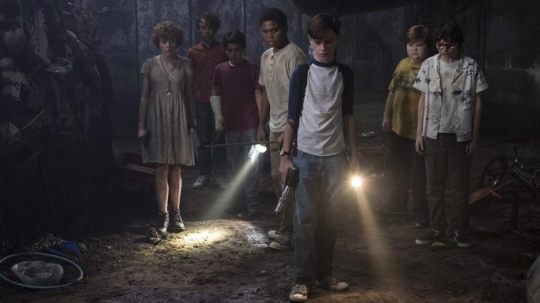
This essay features several spoilers for IT (2017). You have been warned.
A DISCLAIMER BEFORE WE BEGIN
I was, at one point, a hard core Stephen King fan. When I entered my 20s, I owned every book written by him in hardcover -- with the exception of special edition stuff like My Pretty Pony -- including several first editions (like a beautiful first of The Shining). My copies of George Beahm’s The Stephen King Companion and The Stephen King Encyclopedia were already dog-eared and annotated. My prize possessions were the four issues of Magazine of Fantasy & Science Fiction I had which featured the first publication of The Gunslinger, and the other I had which included “The Moving Finger.” My parents thought I was weird, most girls thought I was scary, and at one point even my grandma suggested I seek therapy.
This was until about 2000. Then, an event took place which caused me -- like those in the Loser’s Club -- to abandon childish things. It was a bad decision, but I gave up my Stephen King collection.
I didn't rediscover my love for King until recently. Sure, I dabbled a bit these last few years, reading Under the Dome and 11/22/63, but I never fully re-embraced the hero of my youth. Until I decided to re-read IT, his 1986 masterpiece about a group of wounded people forced to face a truly terrifying force as both children and adults. I saw that Andy Muschetti was adapting the novel for Warner Bros., taking over for Cary Fukunaga, who -- despite being a true auteur -- fell out of Warner’s graces. All news surrounding the new adaptation was overwhelmingly positive, and it had been a long time since we last saw a great movie based on King’s work.
Back in April, I broke my right hip. After two surgeries, being fairly immobile has given me time to read more, so I picked up IT. Revisiting IT transported me back to that time when I was obsessed with King. The experience was overwhelming, like when adult Bill Denborough gets back on his enormous metal steed, Silver, and recalls how he once raced the devil on that bike to save Eddie Kaspbrak. A flood of joy came from reading King’s pulpy prose again. Going back to that tainted town of Derry to hang with the Losers helped make my rehab a little easier. And though I am still on the mend, I am ready to rekindle my love for King.
Which brings me to my other love: cinema. I don't write much about the movies anymore, but I am chomping at the bit to discuss and evaluate IT. There hasn't been a more anticipated film this year for me.
And no film has both pleased and disappointed me more.

WHAT MAKES A GOOD KING ADAPTATION?
Because of The Dark Tower, IT, and the forthcoming Gerald’s Game, there have been lots of clickbait “Stephen King Movies . . . Ranked” lists popping up online. Nerdist had a particularly interesting one, in which their top 10 looked like this:
10. Creepshow (1980)
9. IT (2017)
8. The Dead Zone (1983)
7. Dolores Claiborne (1995)
6. Stand By Me (1986)
5. The Mist (2007)
4. The Shining (1980)
3. Carrie (1976)
2. Misery (1990)
1. The Shawshank Redemption (1994)
Despite the ranking, most King fans and movie lovers alike will agree with this list (although Creepshow over Pet Sematary or Christine? Really? Sincerely?). Two of these films are directed by Frank Darabont (Shawshank, The Mist), and two by pre-what-the-f-happened Rob Reiner (Misery, Stand by Me). And the new adaptation of IT made the cut. So, if we can acknowledge these are the canonical King adaptations, what makes them the best? It's a pretty steep drop off in quality after the top 10. There's Pet Sematary, Christine, 1408, and The Green Mile, meaning that out of 44 movies based on Stephen King’s novels (not including TV mini-series), there’s really only about 14 good-to-great ones. If this were baseball -- King’s favorite sport -- Hollywood would be batting a respectable .318. Be that as it may, this is not baseball, and producing only 1 solid movie for every 3 is pretty awful.
This suggests that adapting Stephen King is tough. Why, though? His books are packed with memorable characters, scenes, and visuals. You could almost say he writes movies. His dialogue is colloquial and specific, and he has a great sense of pacing. While you could easily point out that lots of his stories share only a couple variations for endings -- destruction or aliens -- he is a strong storyteller with a keen understanding of cause and effect and narrative fairness. There's a reason, after all, that he inspired a generation of writers and filmmakers like JJ Abrams, Damon Lindelof, and the Duffer Brothers.
My theory is that King's greatness resides not in his ideas or execution, but in the spirit of his writing. King's voice is the soul of his work. When you read him, it feels like you are sitting down with a friend, listening to him share a great story. King feels familiar, like family. And the filmmakers who get that make films which reflect it.
Take, for example, the number 1 film on Nerdist’s list, The Shawshank Redemption. The use of Red’s voiceover narration immediately brings us into the tale of Andy Dufresne. Stand By Me and Dolores Claiborne also use great voiceovers. But in films like Misery, Carrie, and The Dead Zone, we are given protagonists who become our friends. We find Paul Sheldon to be kind and thoughtful, Carrie White to be sweet and misunderstood, Johnny Smith to be tortured and alone. These films understand deeply what King was aiming for with his characters. So, when Reiner changes events in Misery, it doesn't matter because not only did he truly “get” Paul, he also truly “got” Paul’s relationship with Annie Wilkes. Each of the films on this list, with the exception of IT (and Creepshow because it was an original script), truly grasped the core of King’s characters and their relationships to each other.
King is often considered a humanist author. His characters, including his villains, are often subjects for sympathy. In his work, there is a lot of insight into human nature, both light and dark. King is an observant author, grounding his most supernatural stories in a real world, with real people. This is best illustrated in his character relationships and interactions. Red and Andy develop first respect, then admiration, then deep friendship over their years in Shawshank. It is a relationship founded on honesty as they are the only honest men in the prison. Their mutual trust is what establishes the foundation for Andy’s escape plans, and ensures his success. In The Dead Zone, Johnny’s broken relationship with Sarah is haunted by lust and vitality, the very qualities Johnny loses touch with after his accident leaves him with a power which zaps the life from him with each use. Carrie White’s naive hope she can actually fit in is fulfilled by the compassionate Tommy Ross, which makes the tragedy of her coronation that much more devastating. The films capture these ideas to profound effect, which is why they endure. Once the novelty of plot dissipates, you are left with characters and their connections to each other and yourself. We enjoy a movie for plot; we love a movie for character.
King writes wonderful characters, and the best films based on his work never fail to capture those characters ideally.
Except IT.
Sigh.
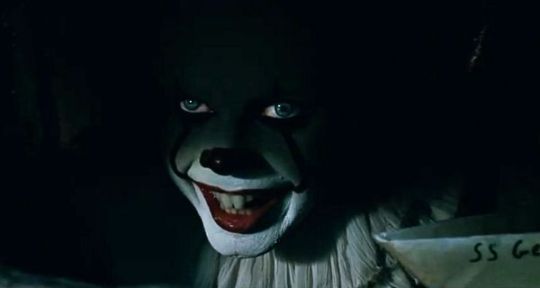
THE PART WHERE I EXPLAIN WHY THE NOVEL IS A MASTERPIECE
It is not hyperbole to call IT “King's masterpiece.” Lots of critics have done it. By its publication in 1986, IT was the purest, most ambitious distillation of themes and ideas King had explored since Carrie in his fiction (and even in non-fiction dissertations like Danse Macabre). If you're reading this, chances are you know the story:
Every 27 years, the seemingly quaint hamlet of Derry, Maine becomes the feeding ground for an entity that has dwelled under the town’s surface for centuries. In 1958, after 6-year old Georgie Denborough is murdered by the creature -- assuming the shape of a murderous clown called Pennywise -- big brother Bill and his Losers Club come together to put an end to the evil. They are only marginally successful, as 27 years later, the Losers are called to return to Derry to kill IT for good.
IT is a multi-generational horror novel, spanning hundreds of years. We meet the Losers first as adults, all of whom (with the exception of Mike Hanlon, who chose to stay behind in Derry and become its resident historian and librarian) no longer remember the events that took place during the summer of 1958. Mike’s ominous phone calls, reminding the adults of the promise they made -- to return if IT ever resurfaced -- unlocks each adult’s dormant memory. As the novel unfolds, so does their collective remembrance of summer ‘58 and all the horrors it contained. King uses the flashbacks to highlight the differences between childhood and adulthood.
As with any epic sized novel, there are a myriad of themes to unpack. IT dives deep into ideas about childhood trauma, the power of personal shame, community corruption, racism, generational sin, and the coming of age ideas expected from a novel about kids becoming adults. For me, where the novel finds its most compelling thematic territory is in its exploration of belief. King wants us to recognize it is the purity of innocence, and the simplicity of belief that binds these kids together, and that the jaded cynicism of adulthood, with all its fears and anxieties, is what threatens to destroy them.
This theme hinges on the role of Pennywise. He is a shapeshifting, Lovecraftian monster, tapping into the fears of his quarry to exploit during the hunt. He appears to Ben as his dead father, to Mike as a pterodactyl-like bird, to the germaphopic Eddie as a leper, and to Richie as the lycanthropic Michael Landon in I Was a Teenage Werewolf. When Pennywise goes after Bev, it is by turning her sink into a geyser of blood which only she can see. Bill is tormented by the memory of his dearly departed brother, whose school photograph Pennywise animates and makes bleed. Children have very primal fears, and that which adults see as fake or absurd, kids often embrace as real. Santa Claus, the Easter Bunny, chupacabras, zombies . . . children do not reject fantasy outright as adults do, making them susceptible to both profound fear and hope.
We see this in the Losers’ response to IT’s attacks. They are terrified, but never stop seeking solution. They find their weapons in objects. Even after he learns his asthma inhaler is a mere placebo, Eddie still uses it to calm his nerves, and later fires it at Pennywise, believing its contents to be battery acid. With Bill’s help, Ben melts down two silver dollars into bearings for Bev to shoot at the monster with a slingshot. When Stan gets trapped by Pennywise after finding himself alone in the house on Neibolt Street, he manages to escape by chanting the names of every bird contained in his field guide. The kids build an underground fort, which they convert into a smoke house to go on a Native American “Vision Quest.” It is during this dangerous endeavor that Mike and Richie seem to travel through time back to a primordial era where they witness IT’s arrival. The Losers’ passionate adherence to ritual and talismans give them a collective power. This power keeps them unified, and even frightens their tormentor. Belief is their truest weapon, especially belief in each other.
The other themes King addresses throughout IT are compelling, but it is this idea about belief that gives the novel its soul. There is no cynicism in King's approach -- he captures the imagination of these children with remarkable affection, and this results in each kid winning our hearts over. Pennywise may be the allure the book needs to attract its audience, but these kids are what inspires guys like me to re-read a 1,000+ page book.
They are also what inspired me to struggle with a movie engineered for my celebration.
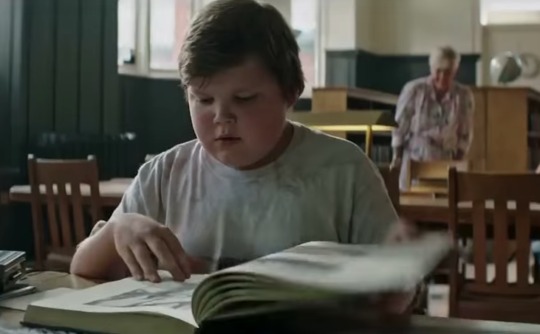
IN PRAISE OF MUSCHETTI’S IT
Before I tear apart IT, which is very popular, having made over $200 million domestically in its first two weekends, I want to praise it. Despite having some huge issues, the film does some things very well. There is a good reason why this movie works for so many people.
The major reason IT works is because of its energy and general nostalgia. While these elements often fade on repeat viewings, they are so engrossing during a first one. Being set in 1989 puts the setting during a period Gen Xers remember fondly and for which Millennials pine. Movie theater marquees are showing Batman and Lethal Weapon 2. A poster for A Nightmare on Elm Street 5 is a coming attraction. The kids ride Schwinns, use Kodak Carousels, don’t have cell phones, and wear denim cutoffs. The aesthetic is perfect. Producer Seth Grahame-Smith revealed in an interview with Birth.Movies.Death that he prepped nostalgia lists for all of the child actors, from music to movies to video games to fashion as a way to show them what summer ‘89 in New England was like for him. The work paid off, because the town of Derry is authentic in its nostalgia. It is impossible not to be drawn into this world.
And this world is scary, even without Pennywise. As with all idealized nostalgic perspective on days long gone, there is a darker undercurrent (as if we punish ourselves for embracing such idyllic memories). Perhaps the darkest element are the adults of Derry. Kids go missing and the “Missing Persons” posters are simply papered over as new children are added to the list. A leering pharmacist flirts with Bev. In the library, as Ben investigates Derry’s ugly history, the Librarian lingers in the fuzzy background, grinning maliciously. Not one adult exhibits empathy for these kids, including Bill’s dad or Stan’s rabbi father. Certainly not Bev’s father, who inhales his daughter’s hair like she’s fresh out of the oven, and obsesses over her virginity with a fervor that would make even President Trump uncomfortable (or envious, if we're being honest). In some ways, the more visceral nature of the film captures Derry’s innate badness more clearly than the hundreds of pages King devotes to the subject in his novel. Sometimes a picture is worth a thousand pages.
Muschietti and his casting director also got the casting perfect. As with the films of JJ Abrams, criticize all you want, but it's impossible to trash the impeccable casting choices. Each of these kids perfectly embodies the characters they portray. Kudos especially go to Jeremy Ray Taylor, Sophia Lillis, Jack Dylan Grazer, and Finn Wolfhard as Ben, Bev, Eddie, and Richie. Ben’s beautiful sensitivity, Bev’s intense devotion and passion, Eddie’s passive-aggressive resolve, and Richie’s unending stream of bullshit are as sharp and resonant here as they are on the page. Even Jaeden Lieberher, as Bill, and Chosen Jacobs, as Mike, look and feel right. Unfortunately, the script makes some poor choices with their characters that nearly derails the film. But more on that in a bit. Without a doubt, these kids are legit actors. No scene better proves this than the swimming scene in which everyone is stripped to their underwear and dives into the lake from the frighteningly high cliff. The scene could have been incredibly exploitative as the boys ogle Bev, but instead the quality of these performances makes their pubescent sexual discovery innocent and real. Consider this a great contrast with the perverse exchanges Bev has with the adult world. It is both ironic and terrifying that Bev is perceived more as an object by adults than by teenage boys.
While the film finds many of its most effective scares in the presentation of Derry, and the juxtaposition of innocent and corrupt images, the advertisements promise that we will be scared senseless by Pennywise the Dancing Clown. As portrayed by Bill Skarsgard, this Pennywise bears little resemblance to the seductive, menacing clown Tim Curry created for the 1990 ABC television miniseries. Skarsgard’s Pennywise is serpentine, alien, with dead eyes and a slithering voice. His costuming suggests his age, and the cracks in his makeup reveal a facade. This Pennywise is less playful and charismatic, and hungrier. He drools as he corners the kids in the Neibolt house. And his shapeshifting is frightening, especially when he presents himself to Eddie as a relentless leper. Skarsgard’s performance is wonderful and wholly his own. He will invite comparisons to the iconic Curry, but ultimately his Pennywise will stand alone.
IT’s success as a film can be broken down into these three elements: Derry, the kids, and the creepiness of Pennywise. But its failure can also be broken down into three parts, too.
1) The absence of a thematic soul
2) The abandonment of characterization
3) The confusion of style for substance
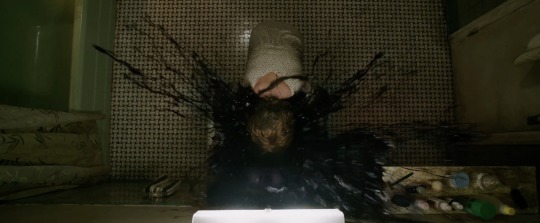
A LOSS OF SOUL
A great adaptation isn’t necessarily about doing the book, but about capturing the soul of the book (or finding a soul no one even knew existed, ala The Godfather or The Shining). A movie can look the part, but if it fails to reveal that essence of spirit, it will eventually crumble. In the case of IT, the movie is about as hollow as the space behind Pennywise’s eyes.
The soul of this story is the children's belief. Outside of a generic, “We gotta believe in each other!” idea to which much lip service is paid, these kids are bereft of belief in anything. This is an atheist interpretation of Stephen King's story, in which our Loser’s Club prefer brute force over imagination. In the film’s climax, Bill leads the charge against Pennywise by picking up a bat and swinging at the clown’s head. All the Losers join him. The result looks remarkable, as each strike causes the clown to transform into each child's fear, but it is a graceless, uninspired physical solution to a metaphysical problem. It also ruins Pennywise. How evil can he truly be when all it takes is an angry mob armed with sticks to bring him down?
Throughout King's novel, the Losers seek many ways to defeat the demon. They melt down the silver dollars. Eddie’s inhaler becomes a chemical weapon. Stan’s bird book is a shield, the names of the birds his mantra. And the kids buy into Native American rituals, like the Ritual of CHUD, to confront IT. Obviously, the shift in setting from the 1950s to 1980s meant losing some of these talismans. After all, the 50s Wolfman, when compared to the 80s Freddy Krueger, is a flaccid nightmare. But every monster has a weakness, even human ones. The Losers spend no time thinking on this.
Indeed, Muschetti strips them of their creativity completely. Gone is Ben’s architectural acumen, which nearly flooded the Barrens and provided an underground club house. Bill’s storytelling, which keeps the group focused, is generically spread amongst all of them. Even Bev's love for fashion and art is lost. It's shocking to me how Muschetti removed the core elements from each of these characters, leaving only their gimmicks -- Bill’s st-st-stutter, Ben’s girth, Bev’s cigarette smoking, Richie’s humor, Eddie's hypochondria, Stan’s Judaism, and Mike’s blackness. In the need to appeal to every demographic, these characters were stripped for parts.
It is a testament to the strength of the performances by this group of kids that the Losers have any flavor whatsoever. The script provides them no depth, only set pieces and surface sentiment, yet they are convincing for awhile in the dark. But like Pennywise’s many facades, eventually they slide off and there's nothing remaining.
The soul of King's story is belief, imagination, and the collective power of childlike purity. Andy Muschetti’s adaptation is more in love with Halloween maze scares than it is with pursuing these ideas. His vision of defeating our fears involves angry children with sticks, not wounded children with imagination. Audiences may like the cathartic release that comes with beating the shit out of the monster, but it does nothing to feed their souls.

WHO ARE THESE PEOPLE?
I already alluded to the surface qualities that pass for characterization in IT, but it goes a bit deeper than this. Character interaction is essential to building great characters, and this is where IT fails epically.
To prove this, let’s take a closer look at Bill Denborough.
Bill is arguably the most important of our protagonists, especially in King's novel. The story begins with him making a paper boat for his brother and sealing it with wax so it will float in the gutter water outside. The death of Georgie becomes a source of guilt and shame for Bill. And since his parents pay little to no attention to him, Bill is made to face these overwhelming feelings alone. It is his determination and inner strength that propels him to lead the Losers in their quest to put an end to IT. But, this quest, while certainly obsessive, is rooted in shame and love. Bill loves each of his friends and often goes off alone because he fears their fate will be his fault, as he believes Georgie’s fate to be his fault. This is the source of Bill’s maturity, which sets him apart from everyone else in the club. Because of Bill’s maturity, the Losers follow him without much question. They are devoted to him as a leader and friend, and willingly choose to lay down their lives if need be.
This is far from the way Bill is presented in the film. He is a Captain Ahab, chasing his white clown into the sewers of Derry. He likes his friends, but often doesn't concern himself with their feelings. In fact, at one point Richie throws a punch at Bill and the two fight over their pursuit of the monster. This Bill is not a leader; he is a dictator. He lacks empathy, and mostly cares for himself. Even worse, his quest is no longer rooted in shame, but in pure vengeance. Bill doesn't express his self-loathing at what happened to Georgie. Instead, at the end of the film, when Pennywise presents Itself as Georgie, Bill just punches IT in the face.
The shift in Bill is a subtle one, but has huge consequences for the story. By changing his leadership style, it makes the other Losers look more like followers of fear than a group of equals. In many ways, Bill is no different than the crazy bully Henry Bowers, whose friends follow him out of fear. Like Henry, Bill is on a mission to destroy, has little regard for the consequences of his actions, gets others involved who don't necessarily want to be, and doesn't listen to reason. Yet, we like Bill and hate Henry because Bill stutters and Henry likes carving his initials into the bellies of defenseless fat kids.
This is not to say Bill isn't the hero, but that Muschetti misfires with Bill by removing his core empathy and giving the character over completely to obsession. While the rest of the characters don't fare as badly as Bill does, each loses something, mainly through the cutting of interactions. On a basic level, we see this in the fact that Bev only interacts with Bill and Ben through most of the movie, yet is presented as the symbol of group unity. She can't even be bothered to share a smoke with Richie, or have a conversation with Stan and Mike.
Bill and Bev certainly present issues in characterization, but no character is more problematic than Mike Hanlon. There have already been several insightful thinkpieces about the treatment of Mike that there is little I can add, but the gist is this: Mike is presented as a token black character for no reason. Granted, most of these characters are tokens in their own way, so it stands to reason Mike would receive no better treatment. It was a struggle for me to watch one of my favorite characters in the novel reduced to a handsome black face that has to face the racist white bully. It was harder to watch Mike's love for history handed over to Ben. Mike deserved better.
All of these wonderful characters deserved better. This is what happens when style trumps substance.
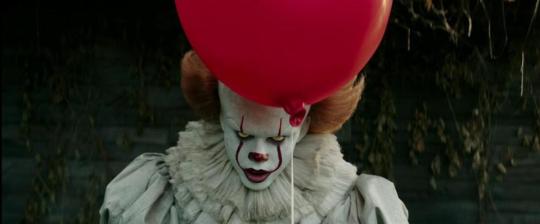
THE NEW HORROR AESTHETIC
IT is the culmination of the trend in cheap seat horror to rely on the jump scare as the source of terror. No horror film of this variety has handled this trope better than Muschetti’s film. Arguably, Muschetti has perfected the jump scare. His film is a maze at Knott’s Scary Farm or Universal’s Halloween Horror Nights waiting to happen. The soundtrack is pitched to screamtastic levels. Put a camera on audiences and every 5-7 minutes, prepare to see people grabbing each other or jumping like William Castle had come back from the dead to put a tingler in their seat.
This reliance on the jump scare is aided by a color palette washed in sepia tones and deeper reds, which enable the clown to do his Jack-in-Box routine in darkness that can't elicit laughter. Muschetti and his postproduction team nailed the look of this film like mad scientists.
The beauty of this is that audiences love IT. This is a horror movie that feels like a horror film. Yet, IT remains safe, like those scary carnival mazes. When you're creeping your way through one, every darkened corner promises danger, but behind all that tension you know none of the masked employees can touch you without legal repercussion. Sadly, IT isn't allowed to touch you either. Promises of danger lurk around every shot, but it is all bark and no bite.
Take the Neibolt Street House sequence. There's a clever moment in which Bill and Richie, separated from Eddie, try to find him before Pennywise gets him and are presented with three doors to escape. The doors are labeled “Not Scary,” “Scary,” and “Very Scary.” Of course the boys take the first one, and are presented with a frightening image. You would imagine they would be forced to take the third door, but instead they double down on the “Not Scary” path and are rewarded for their cowardice. This is the ultimate in style over substance. The scene looks perfect, but says and does nothing.
Still, the aesthetic is convincing. This is how we want horror movies to look, even if they have nothing to say.
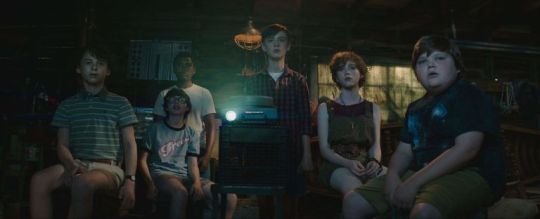
THE IMPLICATIONS OF IT
Since Warner Bros.’s sinks are exploding with dollar bills right now, IT will have a seismic impact on the popular culture landscape. Some things are inevitable: we will get a “Chapter Two” featuring the adults returning to Derry for a final showdown with IT. We can also expect more horror movies. Will we get more clown flicks? I'm sure there's plenty of those being prepared for VOD as I write this.
What I am more concerned about is the state of horror film. Over the last decade, we have seen a renaissance in indie horror. Get Out, It Follows, The Babadook, The Witch, The Invitation, Cheap Thrills, Starry Eyes, Goodnight Mommy, and Raw are a few of the most notable titles. This movement has brought a variety of styles and an emergence of new voices unlike anything we’ve seen since the 70s. Even a big budget haunted house franchise like The Conjuring reinforced the brilliance of James Wan and reminded us of the power in the traditional horror story amidst all the rebels.
IT feels like a sea change, though. The Conjuring made tons of money, but it didn't make this kind of money. And while The Conjuring felt traditional, IT is being presented as something new. People are talking about it like it's different. Joe Hill, King's son and respected novelist, called IT “one of the five best horror movies I've ever seen.” This movie is a hydrogen bomb on pop culture, especially as it arrived on the heels of the poorest performing summer box office in 20 years. This movie isn't just new, it's a savior.
So while we can expect more Stephen King remakes and adaptations, we can also expect less money for horror indies. Studios will want more movies to look and feel like IT, and in this narrowing marketplace, that has the potential to choke out the little guy. This is the true horror.
I hope I am wrong. Horror films are cheap to make. That is their appeal for young filmmakers looking to make a mark. Hopefully this doesn't change.
The Stephen King fan in me celebrates the love IT is receiving around the world. The cinephile in me is afraid of what this means for horror cinema going forward.
#IT#Stephen King#Film Adaptation#Horror Movies#Finn Wolfhard#Sophia Lillis#Jeremy Ray Taylor#Chosen Jacobs#Jack Dylan Grazer#Andy Muschietti#Bill Skarsgard#Film Analysis
34 notes
·
View notes
Text
Making sense of the Nonsense: A Johnlock ( conspiracy ) meta
“Truth is rarely pure and never simple” ---Oscar Wilde
“Truth is a metaphor, willed into existence” ---Nietzsche
First of all can conspiracy be possible after all these shit happened? Of course,why not, especially when there is a fair chance that another episode may pop up someday sooner, then it’s obviously possible.
A Modern Nightmare:
One fine morning Gregor Samsa woke up and found that he had transformed into a despicable vermin overnight [source]. Sherlock season 4 is exactly the same thing, came out in a crisis time of human civilization and proved to be a modern nightmare.
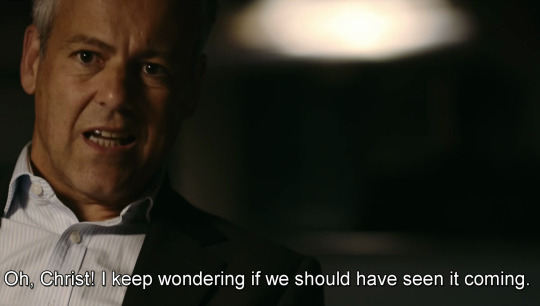
The whole series is full of inconsistencies and it is unlikely that 3 different directors will repeat the inconsistent things over and over, unless it is deliberate. It’s impossible to address all the inconsistencies in one meta ( I have an exam soon :( ). But let’s start from TST.
The infamous skull hell:
The skull hell is one of the most infamous inconsistencies in S4. The skull continued to glow and un-glow throughout the series.

Does it have a possible explanation? Well then, it basically has. It may refer to a Hitchcockian shot. The milk scene from the movie Suspicion:
“Suspicion” tells the story of a woman who suspects her husband is trying to kill her. There’s one scene in the film that really jumped out.
That’s the scene where Joan Fontaine’s character is in bed, fearing the worse and her husband, played by Cary Grant, brings her a glass of milk. The camera follows Cary Grant coming up the stairs and as he continues something strange stands out about the glass of milk. It’s bright and bold in the frame. Is he trying to poison her? That’s certainly what we thought when we first it.
That was Hitchcock’s intention, actually. He put a light in the glass to highlight it in the shot to get the audience to wonder what was going to happen next. It’s a simple, but ingenious, technique.
Read more:
http://www.tasteofcinema.com/2014/the-10-most-ingenious-techniques-used-by-alfred-hitchcock/#ixzz4WEQh2rpe
youtube
Ostalgie:
In TST, when Sherlock went to hacking genius ( is he Russian?) Craig for some help Craig tells him about “ostalgie”
CRAIG’S HOUSE. Craig is sitting at his computer typing while Sherlock stands behind him. CRAIG: Have you heard of that thing, in Germany? SHERLOCK: You’re going to have to be more specific, Craig. CRAIG: ‘Ostalgie.’ People who miss the old days under the Communists. People are weird, aren’t they? SHERLOCK: Mm. (He narrows his eyes momentarily.) CRAIG: According to this, there’s quite a market for Cold War memorabilia – Thatcher, Reagan, Stalin. (He smiles.) Time’s a great leveller, innit? Thatcher’s like – I dunno – Napoleon now.
Then When Mary was wandering from one place to another to escape her consequences, we got a Thatcher era ( cold-war communism era/pre-1991 ) flight check of some sort, why it is? Ostalgie? Mark Gatiss hates conservatives, but is does not necessarily mean he is inclined to left. I don’t know. Anybody?
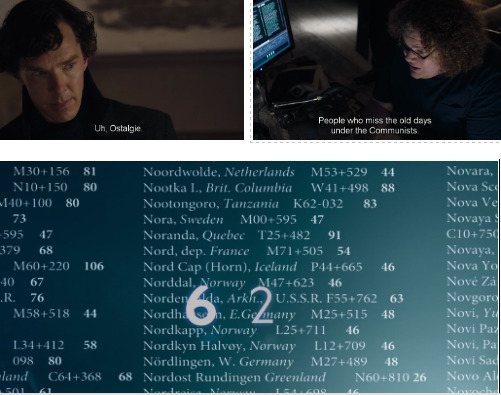
USSR, East Germany, West Germany, Quebec do not exist anymore.
Mary’s weird-ass redemption wank:
Mary was predicted to be dead by the end of Season 4, but so sooner in TST? And with a redemption wank saved for her? To save Sherlock in a physically impossible way? A sacrifice?
The whole Aquarium-scene is superficial and so wrong. There are so many theories floating around, One is the alibi theory: John actually shot Mary, and Sherlock lied to Ella to hide John’s deed. Not impossible.
Read more on my Fragmented Perception meta and here is another beautiful theory by @shawleyleres Dreaming, Memory and Tidal Waves
OK lets move towards TLD
Apparently TLD is a better episode than the other two episodes of this particular season. But that does not mean this is devoid of weird facts. But when TST has seemingly trivial ones, the facts are bigger. I am not going to elaborate, but just discuss some points.
1. Faith Smith and her note, who actually took down the note? Culverton confessed that his own daughter wrote it and he provided Sherlock with that note. Is he reliable?
2. Was Eurus actually with Sherlock when she came disguised as Faith Smith?Or it’s a mere delusion?
3. Culverton did not seem to be that grand a villain like Moriarty or Magnussen. Of course he was nasty, but... also what's the point of secret doors and was he really judged or got pardon by bribing the authority.
4. Ghost Mary as John’s subconscious (seriously WTF)
5. And many more...
TFP then.
Before going to TFP aka The Fake/Fucky Problem lets discuss some salient features of Eurus Holmes:
The psychiatrist/Faith avatar:
Umm a visual parallel first.

oops. Arkham/Azkaban/Shutter Island/Sherrinford?, uhh. Eurus even disguised as a therapist as Harley.
The gunshot wank:

Well look at the picture, first is from the first scene of TLD, and last is Eurus’s hand. Spot the difference, Eurus’s hand is sleeveless but the hand in the first picture is blue/black sleeved? Why is the difference, is the first hand is of John, before killing Mary? is it Sherlock’s hand?
Back to TFP, or the worst episode ever. It’s like the Limbo phase of the nightmare. Sherlock always alludes to many movies, books, comics, TV series and makes many references to other media besides the original canon. In TST they went for Appointment in Samarra by William Somerset Maugham [an unhappily married gay doctor/veteran/spy/storyteller], made a reference to Macbeth [ i.e. “By the pricking of my thumb”], In TLD we got references of George Orwell’s 1984 frequently[”Big brother is watching you” etc] and also a whole big dialogue from Henry V [ Shakespeare was gay or at least bisexual ]. They alluded to V for Vendetta,in TRF, and in TAB referred to Inception and a rather unknown but a radical intellectual movie La Haine [ full meta here ]. So they preferred rather intellectual/cult movies or stories/novels/dramas to make allusions.
But TFP seems more like a disjointed montage of horror movies/psychological thriller. No ACD, but a mix-up of Saw, The Shining, The Ring, Suicide Squad, Shutter Island, Exorcist, Silence of the Lamb and many other horror movies, directly adapted scenes from them and combined them with bad CGI effect.
I am not going to rant but TFP brought back some unpleasant childhood memories which were deeply buried in my id before.[ ”Books are well written or badly written, that is all”---Wilde, again]
So yes a psychological analysis is possible. @shawleyleres, @the-7-percent-solution, @jenna221b, @marcespot and many others have already started analyzing, I had to fight with my emotions after this cursed episode ( literally episode no. 13) and after that I came to realize that this episode is FAKE.
So many points, so many parallels, this is our deepest limbo, or is it Sherlock’s, is it John’s?
First of all lets see which predictions made before or after the release of S4 apparently came true:
1. Sherlock has a secret sibling.
2. Sherrinford is a prison where Eurus is institutionalized.
3. There will be a game which will not end.
4, Sherlock will have to choose between Mycroft & John.
5. Mycroft’s umbrella is a secret weapon ( a crack theory )
But it was never predicted that this episode would turn out to be so bad and out of context.
An analysis:
Eurus gave a puzzle in her childhood which would supposed to be solve the redbeard problem, but it turns out that it was actually about a little girl lost!!!
Sherlock can’t sense there is no glass before Eurus’s cell!!!Sherlock ignoring Vatican Camios!!!
The whole Molly Hooper thing and she is talking to a lock screen!!!
3 Garridebs dangling!!!
The infamous snake-mating dance between Harley Quinn & Joker and Joker giving up his life happily to play posthumously!!!

Background music:“I need a gangsta, to love me betta, than all the others do”!!!
John chained in a well and getting rescued with a rope!!!
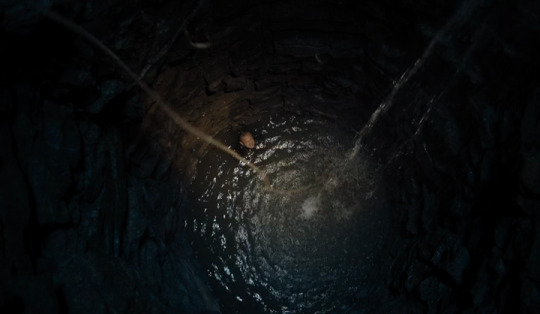
Who was chained in the bottom of hell-fire and got out without any effort and made a palace as if chains did not exist? SATAN [Paradise Lost, Book I, same inconsistency]
[Laughs out Loud]. FAKE
Only explanation, NIGHTMARE
If it is Sherlock’s Nightmare:
This theory goes like this:
Eurus is Sherlock’s anima, he is in EMP, and probably in the tarmac hell still. Victor Trevor is John’s mirror, a childhood John. Sherlock somehow was indirectly responsible for Victor’s sad demise. He constructed a parallel universe, and disguised his memories in the shapes of complex metaphors. Especially when Sherlock was talking to Eurus at the end, comforting her, it sounded like he was telling this to himself:
We're going to crash! I'm going to die! Argh! [HE GASPS FOR BREATH] I think it's time you told me your real name. I'm not allowed to tell my name to strangers. But I'm not a stranger, am I? I'm your brother. I'm here, Eurus. You're playing with me, Sherlock. We're playing the game. The game, yes, I get it now. The song was never a set of directions. I'm in the plane. I'm going to crash. And you're going to save me. Look how brilliant you are. Your mind has created the perfect metaphor. You're high above us, all alone in the sky, and you understand everything except how to land. Now, I'm just an idiot, but I'm on the ground. I can bring you home. No. No, no. It's too late now. No, it's not, it's not too late. Every time I close my eyes, I'm on the plane. I'm lost, lost in the sky and... no-one can hear me. Open your eyes. I'm here. You're not lost anymore. [SHE SOBS] Now, you... you just, you just went the wrong way last time, that's all. This time, get it right. Tell me how to save my friend. Argh! Eurus, help me save John Watson.
Well I am now referring to @shawleyleres‘s metas: X X X
By the way was Benedict referring to this whole Eurus-Sherlock conversation as a monologue? IDK. This theory does not convince me of John’s meeting with Eurus twice.
So, yes now move to another::
If it is John’s Nightmare:
According to this theory, John was having a nightmare after he was shot by Eurus; this theory explains the Bond air thing, the spinning John, the underestimated cowardice Mycroft, all the horror movie melange, the drone, dangling Garridebs( John’s actually in the Garridebs situation himself ), the Victor-Trevor-as-John’s-mirror thing, the rope rescue,the fear of Adl0ck and Sher1o11y, the cheesy cuts at the end of the episode, but for me this theory does not explain the whole Sherlock-Eurus interaction at all.
On defense of this theory I can give you the excellent video meta by @marcespot and this meta
Ok, now let me tell you what do I think:
Can a shared nightmare be possible?
I really don’t think so, but really re watching TFP more and more makes us to think of TAB. @marcespot‘s theory seems quite convincing to me, also this post made by our senpai @inevitably-johnlocked but I really think Sherlock’s anima is Eurus. But I never think Sherlock’s still in tarmac hell, because many reasons...one of them is Porlock. I rather believe that TST is full of real, unreal, surreal, dream sequences, memories i.e. fragmented perceptions. I think TLD serves the purpose of both a third person narrative and the characters’ perspectives, but TLD have a semi-Senecan ghost device, a disguised psychiatrist/therapist, only Sherlock can see someone aka disguised Faith Smith and many other weird fact. One of which is the background TV-video of Culverton’s hospital which showed us jumping sheep, according to @tigressthetiger which signifies falling asleep:
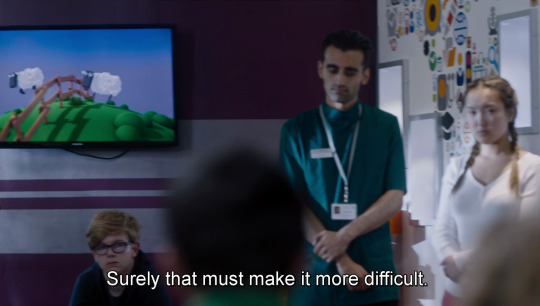
Look even the dialogue is fitting.
Well I am not talking about a shared dream, but what if TFP is the mixture of both Sherlock & John’s two different dreams? Unlikely but umm. I don’t know how to pull off this kind of complex thing. Maybe S4 was really bad-writing ( except it is not )
Well then, when I rewatched TFP, it seemed to me John’s horror-dream, only John’s horror dream until this scene:

From the above scene it seemed to me the dream of nobody other than Sherlock.
The melodrama, the metaphors, all the signs make me convinced it’s Sherlock’s dream. Or self-conversation?
The whole nursery rhyme thing recited by Eurus does not bring any solution to Red-beard’s murder case. Just because Eurus is evil? Why just why? No explanation. Also the only alive girl in Bond air, whose mirror was she?
Eurus served as both Sherlock’s and somehow John’s mirror, while Victor is clearly John’s childhood:

P.C. @jarlie86art
From John’s rescue by the rope it again seemed to be John’s nightmare ( Argh! background Mary’s voice-over, cheesy cuts, a platonic parentlock WTF)
Also what’s the point of the whole Musgrave false graves, the moor, children playing... a direct callback of a disturbing novel by Emily Bronte : Wuthering Heights, also of Bronte sisters’ childhood and disturbing/haunting memories.
CONFUSING!!!! because unlike TAB, TFP is not still confirmed as a dream by the writers. Also when in John’s perspective the horror movies are of mostly male point of views, Sherlock’s POV finds reference from Victorian/Gothic horror novels which are from female point of view!!! ( “Sherlock is actually a girl’s name”, “ East wind was basically me”, Sherlock has a demonic anima archetype etc)
On author’s sublimity and ‘Insane wish fulfillment’:
First of all TAB was a gay fever dream with powerful women characters and a male villain (i.e. Moriarty). TFP was exact opposite, queerbaiting, disturbing, misogynist, and a psycho female villain: Ebony Darkness Dementia Raven Way Eurus Holmes.
Why this 180 degree turn? TAB had some of the excellent-most editing in TV history, TFP has none, we can even see the green screen in the graphics.
My intellect does not want to agree with the idea that TFP was simply bad writing, and the crew were smoking weeds all the time. It could be said if there were no previous seasons, especially if there was no TAB.
So, why did Mofftiss do so, Just to fuck up with us? Just to prove us wrong, since TAB was predicted by TJLC accurately? Or just to fake the show’s death? The actual Richenberg redux? I have no answer of these questions, umm perhaps I have. Why they have called TFP as insane wish-fulfillment?
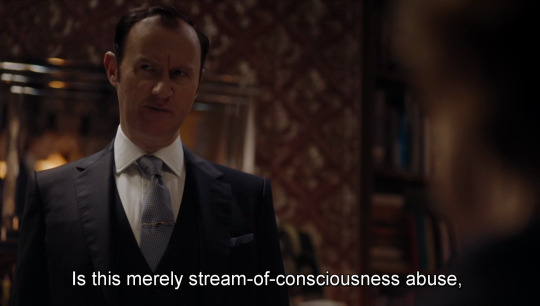
They have transformed all their childhood traumas, disturbing memories into one episode.
According to Freud and other psychologists sublimation is one of the highest coping mechanisms, authors tend to use literature as a vehicle of fulfilling unfulfilled wishes, desires and transform their traumas into arts.
I don’t know if you agree or disagree with this statement. But this is not the most impossible thing. Johnlock is not yet confirmed. The series can really comeback if and only if TFP is a confirmed, otherwise we are more intelligent than Mofftiss. #Give-Us-a-4th-Episode-Soonish
TL;DR: To quote @shawleyleres , S4 is not fake, 100% real in Sherlock’s or John’s Mind.
Instead of having a specific cliffhanger, TFP itself is a massive cliffhanger
Long live conspiracy,and long live TJLC
Transcript courtesy: http://arianedevere.livejournal.com/
I promise to elaborate the points I mentioned in another metas.
Tags under cut:
@love-in-mind-palace @shawleyleres @isitandwonder @tigressthetiger@loveinthemindpalace @hudders-and-hiddles @waitedforgarridebs @ifyouarelookingforqueerbaiting @amaranthinelover @separating-my-porn-and-tjlc @artisticpanda23 @lijahlover @heimishtheidealhusband @astudyinqueerbaiting @atikiology @johnlockshire @bbcatemysoul @bbcromance @tjlcer @johnlockishell @grumpyjohn @graceebooks @jon-lox @heimishtheidealhusband @just-sort-of-happened @depth-of-loyalty-and-love @deducingbbcsherlock
@shag-me-senseless-watson @wssh-watson @watsonshoneybee @sussexbound @vanetti @jenna221b @the-7-percent-solution @teapotsubtext@roadswewalk @isitandwonder
@inevitably-johnlocked @loudest-subtext-in-tv @wellthengameover @skulls-and-tea
@marcespot @johnnlocked @multifandom-madnesss @joolabee @ebaeschnbliah @ervagworld @escaroles @bimartin @green-violin-bow @glittersparkledust @yorkiepug
455 notes
·
View notes